The Article
Discovery 1 Phono Amplifier From Origin Live
17th September 2021
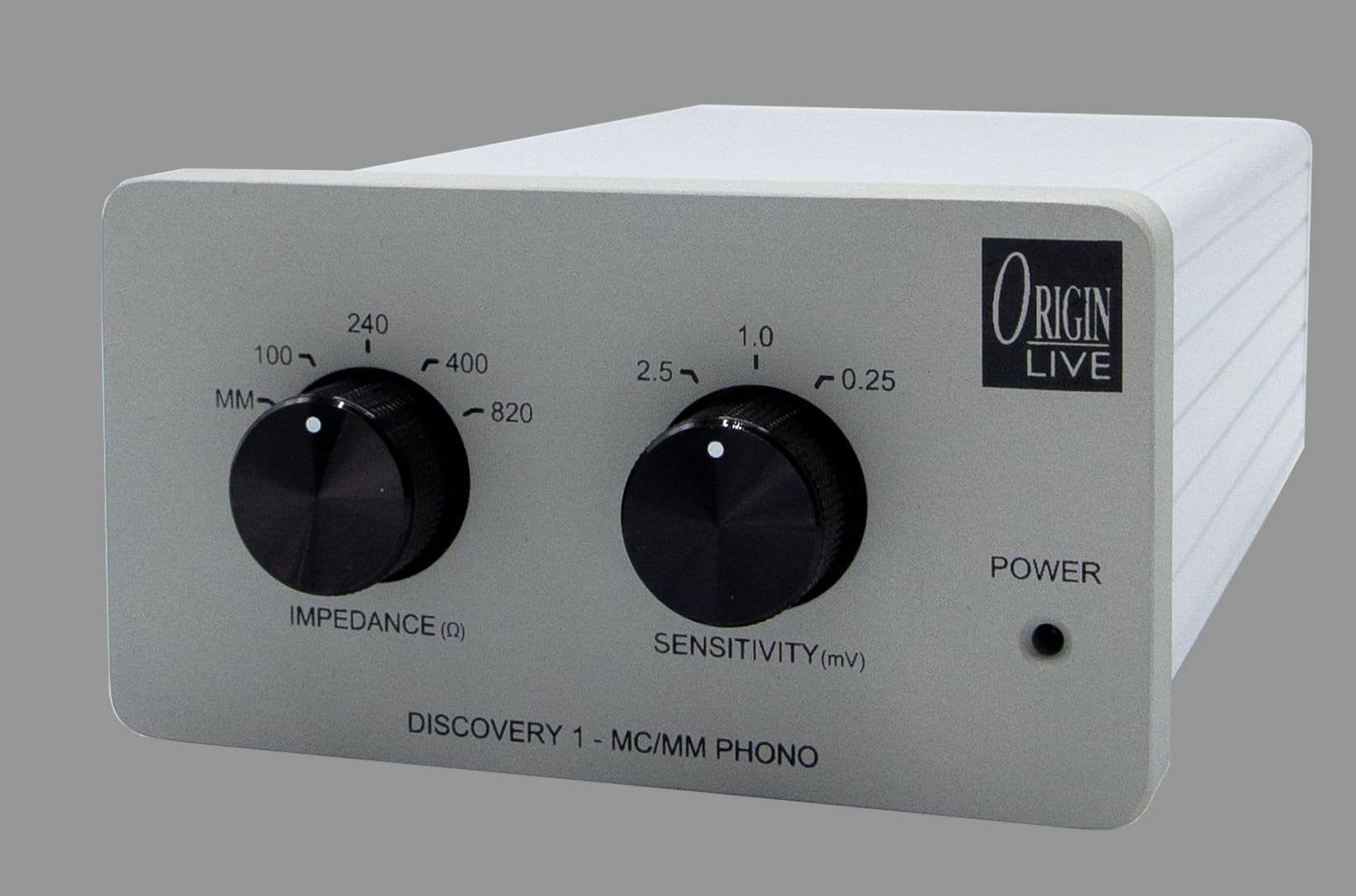
Handling both moving magnet and moving coil cartridges, Paul Rigby reviews this compact, small footprint phono amplifier
On the face of it, the Original Live Discovery 1 looks straight-forward, no nonsense and structurally sound. You’d never guess that Origin Live had, in fact, sprinkled fairy dust inside it. Electrically conductive fairy dust, I have to add…but still.
One principle feature of the design can be encapsulated within this quote, “Unlike many other phono stages, the Discovery 1 connects the cartridge directly to the amplification circuitry. There is no initial DC blocking or filtering in the electrical path to degrade the audio signal before it undergoes enormous amplification close to 100dB at 20Hz.”
So what Origin Live is saying here is that other companies stick a whopping great capacitor in line with the cartridge which means that signal degradation is occurring even before amplification occurs. So you amplify the signal and that also amplifies the degradation.
Origin Live’s decision to cut that part out should according to the company, reap sonic dividends.
The Discovery 1 is built around a zero feedback passive equalisation RIAA filter. Passive to, says Origin Live, avoid colouring sound from any feedback shenanigans created by the phono amplifier.
Aimed at both moving magnet or moving coil, gain offers a choice of 46, 56 and 66dB while impedance provides a range from 100, 240, 400, 820 Ohms for moving coil cartridges and 47K Ohms for moving magnet. Both are accessed via solid, chunky, clunky knobs on the front fascia. A nice change from fiddly DIP switches that are common even at this price point. There’s also a low-key blue power light.
SET UP
The rear of the chassis provides the usual inputs, outputs and ground knob plus a clover-leaf shaped power socket.
Spanning 173 x 103 52mm, the Discovery 1 weighs in at 639g. In fact if you’re at all familiar with the classic Trichord Dino phono amplifier, then the Discovery 1 is broadly similar in size to that product.
When setting up a phono amplifier, I prefer to ignore the cartridge’s set up manual/leaflet and gauge the phono amplifier’s settings by ear alone. The cartridge specifications in terms of gain, for example, are fine to get you off and running but my ears are the final arbiter.
I prefer to push a phono amplifier only enough to lift the audio signal from being muddy and dull. Once past that level, the boost from the phono amplifier should be fine. Any more that that results in a hardening of the sound, adding a rough, solid-state effect.
Hence, I prefer the main amplifier to shoulder the majority of the work when boosting the signal. The phono amplifier, in my opinion, should only do ‘just enough’ to get the job done. It should never shoulder the burden of the work when boosting the cartridge’s tiny initial signal.
I recommend that you experiment with the settings on the Discovery 1, no matter what your cartridge says, and use your ears to hone into the sweet spot for your ears, your room and your system.
I settled on 100 Ohms and 46db of gain. Again, I wanted my main amplifier to do most of the heavy lifting.
SOUND QUALITY
I began with minimal synth duo, Deux and the album, Decadence on the Miminal Wave label (2017), a compilation of the duo’s work from 1982-1985 and the excellent track, Game & Performance.
This track consists of a male and female vocal, the latter sometimes treated. The vocals are backed by synths. Space is also a part of the arrangement here so there’s lots of opportunity for nuance and emotion to spill forth.
At the beginning of this song, there is that treated female vocal sequence. At this price point, I’m used to this part of the song sounding a little constricted, a little edgy and compressed but not with the Discovery 1. The Origin Live amplifier opened up this vocal. Pulling it apart, widening the presentation adding detail and, because it also infused air into the delivery, a greater degree of clarity. This effect also resulted in a slight softening of the vocal itself. It was no longer hard, verging on the robotic. It added emotion and nuance. Yes, the necessary and planned harshness remained but there was more complexity to that now.
I also noted a broadening of the soundstage so the entry of the male vocal gave that delivery more of a staged feel. That is, previously, I felt that I was right up close to the vocal, I was zoomed into the vocal itself. Via the Discovery 1 the performance sound like it was coming from a stage structure. There was more space between my ears and the vocals itself.
This gave the group itself a greater form and structure. The group felt more of a whole than a collection of individual noises and sounds. In effect, the song had a new sense of maturity.
It’s important to note, though that the core impact from this track remained. The opening up of the soundstage didn’t drain any of the music’s power. There was no softening around the lower end here. The rather clipped, focused effect of the synthetic bass beat continued to provide a punch which helped the music to maintain a brisk pace.
What the lower frequencies did give the song now was a better balance between compression and space and between edge and fragility. The Discovery 1 allowed the music to breath but it also helped to provide a more dynamic variation to the song as a whole.
GOING PROG
Next, I played an Electric Light Orchestra album oddity, the EMI/Harvest 1974 release, Masters of Rock, a compilation of the band’s early works including the group’s epic version of Roll Over Beethoven, the best version of the song I’ve ever heard – and that includes Chuck Berry and The Beatles in that summation.
The initial classical string section was both full and heavy with bass and lower midrange goodness. The violins and cellos provided a warming yet rich presentation, enhanced by the classic 70s mastering which provided a glow all of its own, of course.
Even so, treble highlights still emerged from the cuddly bass glow adding a sense of rich clarity and transparency that poked through the rock noise with ease.
This was a feature of how the Discovery 1 handled the music itself. Because of the low-noise presentation, there was lots of space between each instrument. The sense of separation meant that individual instrument detail was better noted by the ear. Adding that gamut of information meant that the overall soundstage was jam packed with detail from instruments up front and shy in aspect.
The result was a layered, rich and complex feedback. It was also easy for the ear to pick out subtle details such as the frantic piano thrashing towards the end of the track which could easily be masked by the percussion and lead guitars but, via the Discovery 1, was picked out superbly.
CONCLUSION
Offering a small footprint and a solid design, this robust little phono amplifier is easy to use and understand, with its rotating knobby interface. More to the point, though, the open and spacious nature of the midrange and treble allows music to flow with ease. The quality of the same is under pinned with a solid bass response to provide a balanced output.
A superb phono amplifier in this price point, the Discovery 1 is highly recommended.
ORIGIN LIVE DISCOVERY 1 PHONO AMPLIFIER Price: £990 Website: www.originlive.com
GOOD: design, interface, low noise, spacious mids, solid bass response
BAD: nothing
RATING: 9
[Don’t forget to check out my new Patreon Page at www.patreon.com/audiophileman, for exclusive postings, giveaways and more!]
REFERENCE
Tellurium Q cabling
Blue Horizon Professional Rack System
Harmonic Resolution Systems Noise Reduction Components

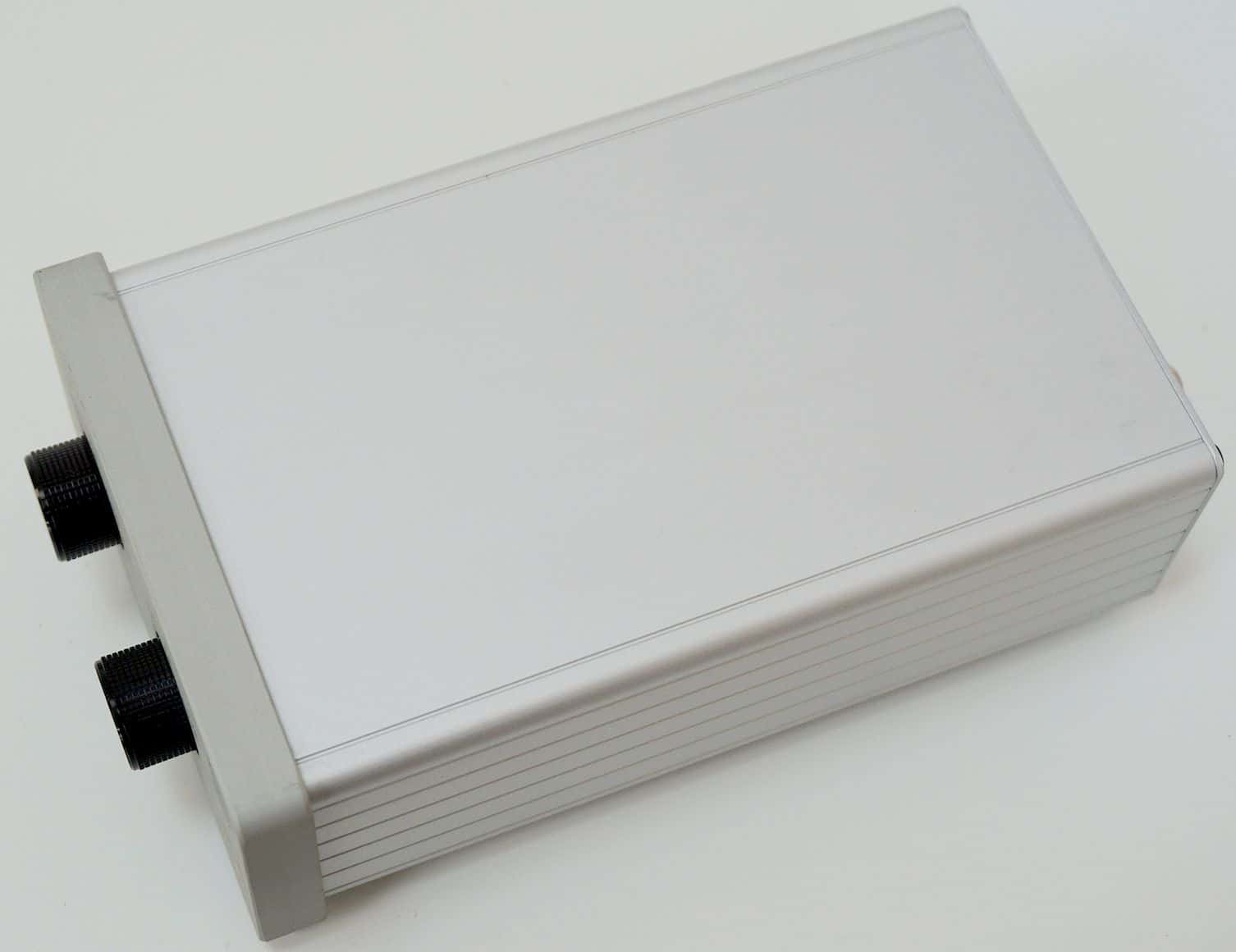
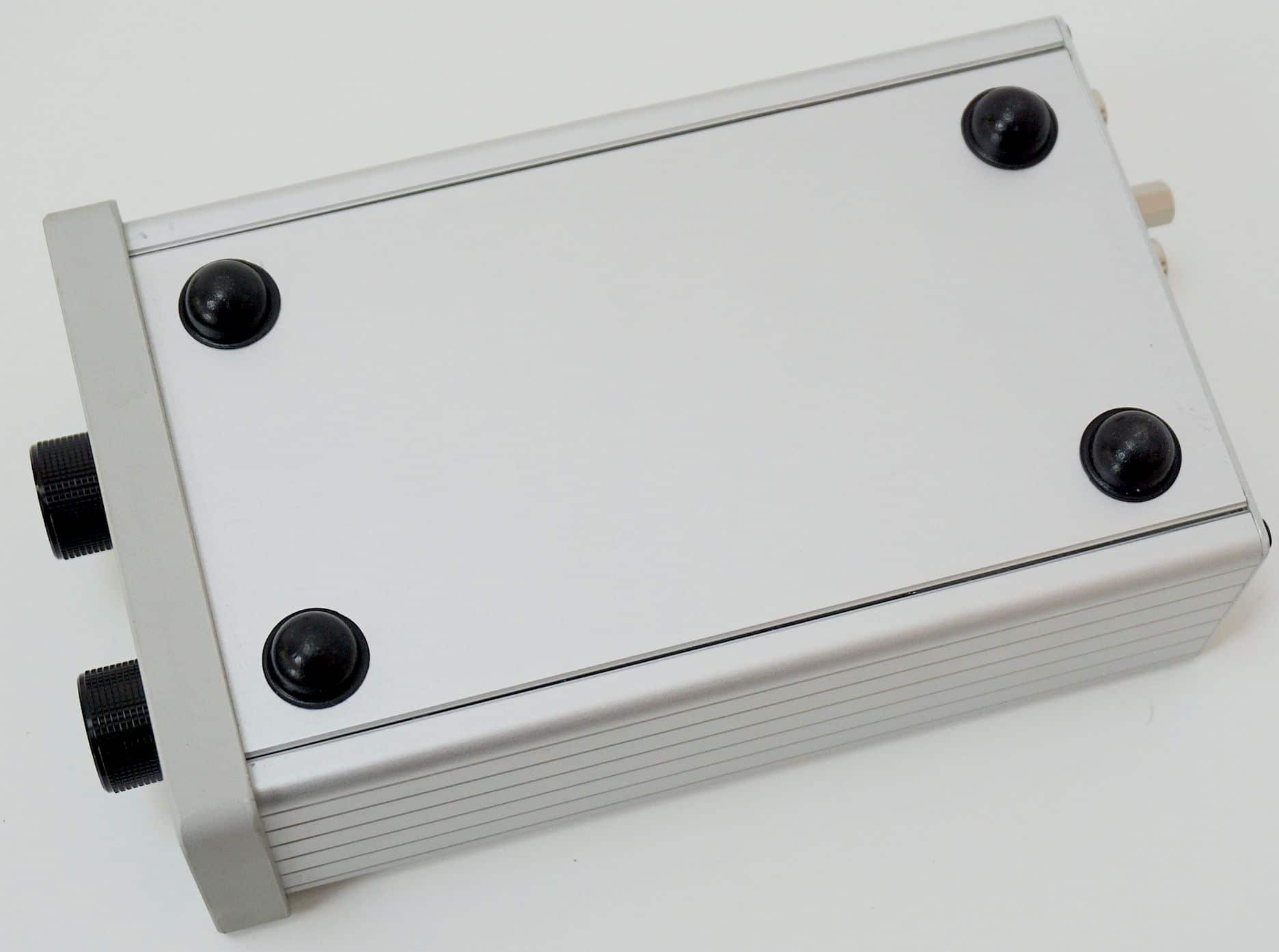
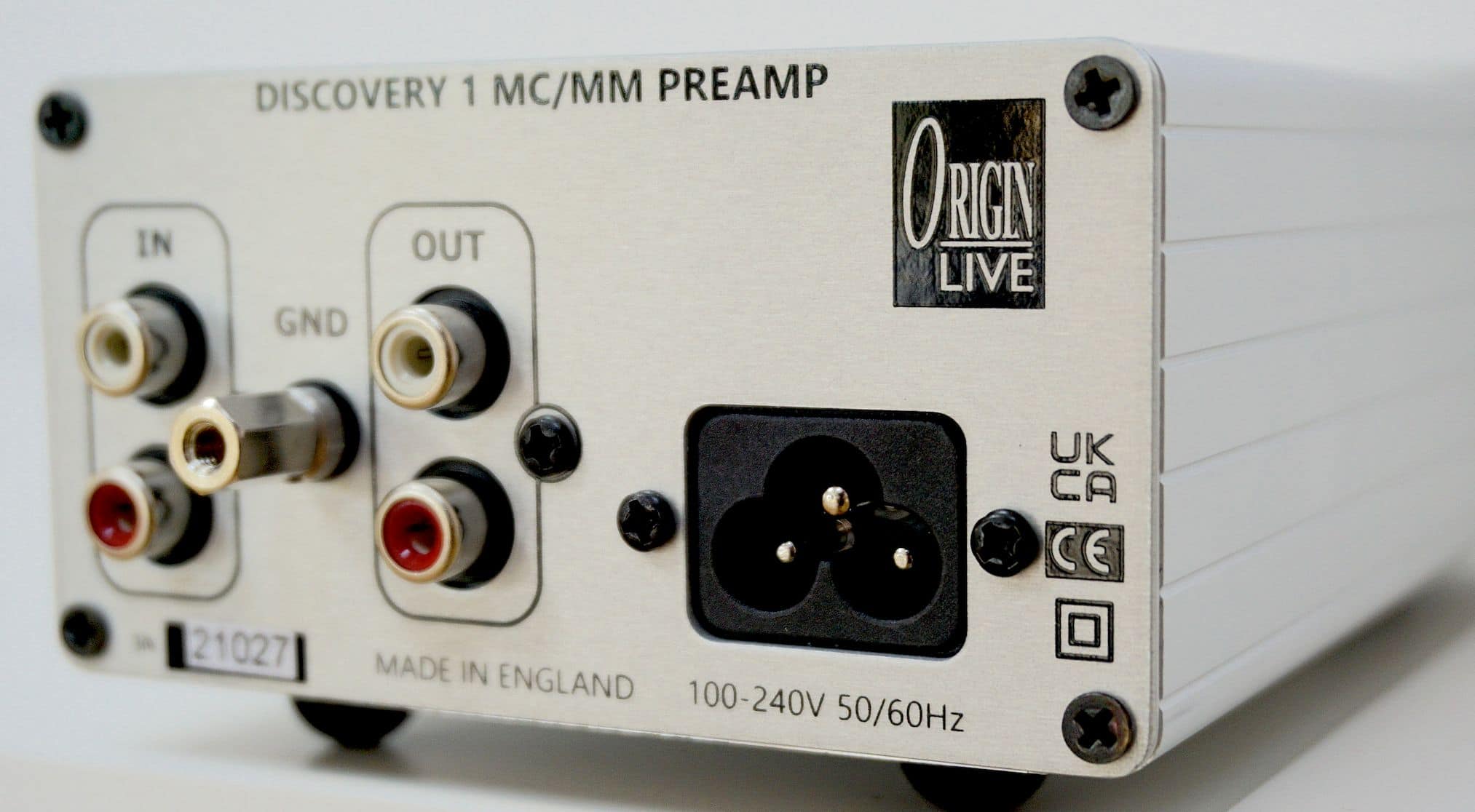
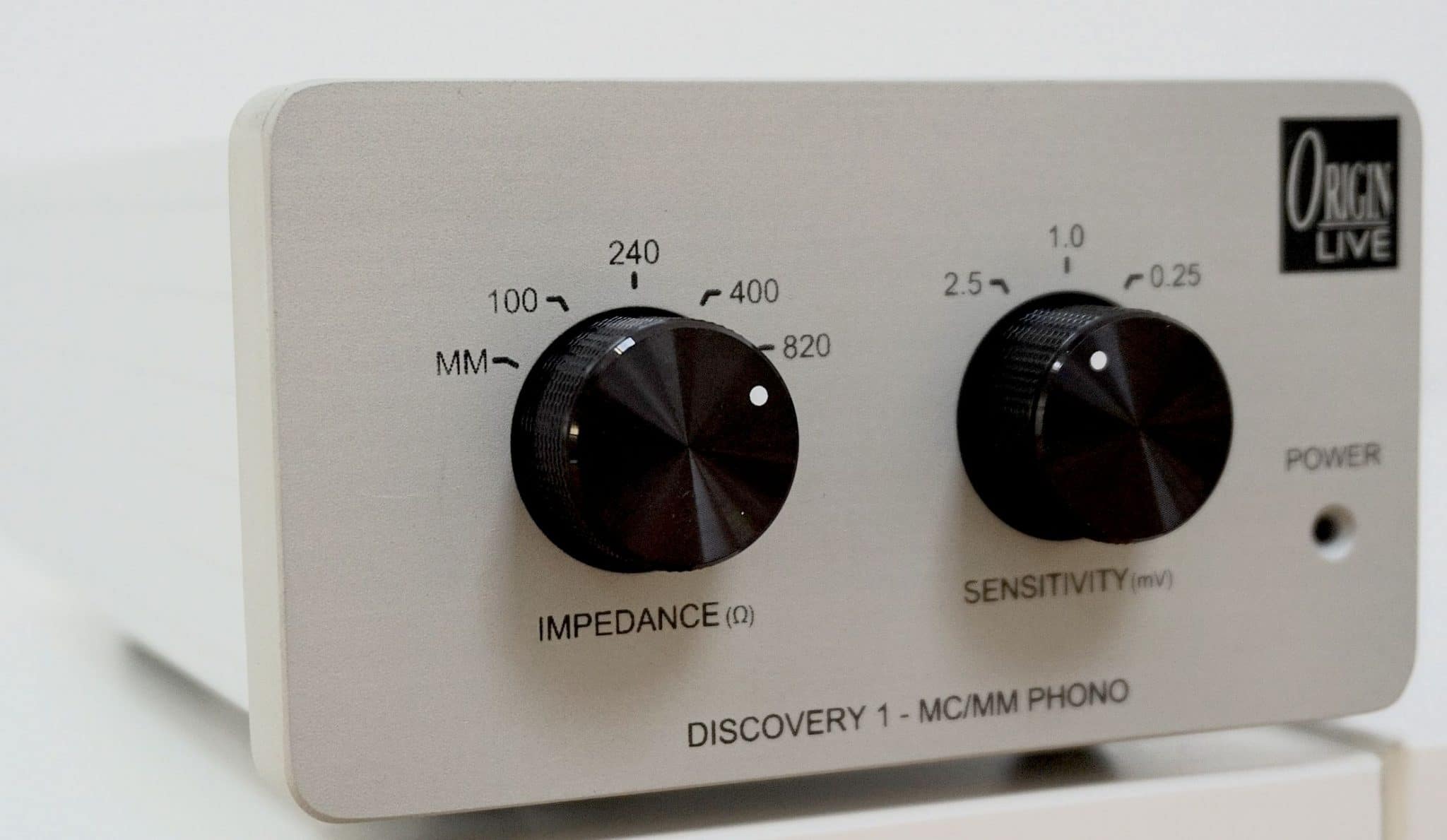
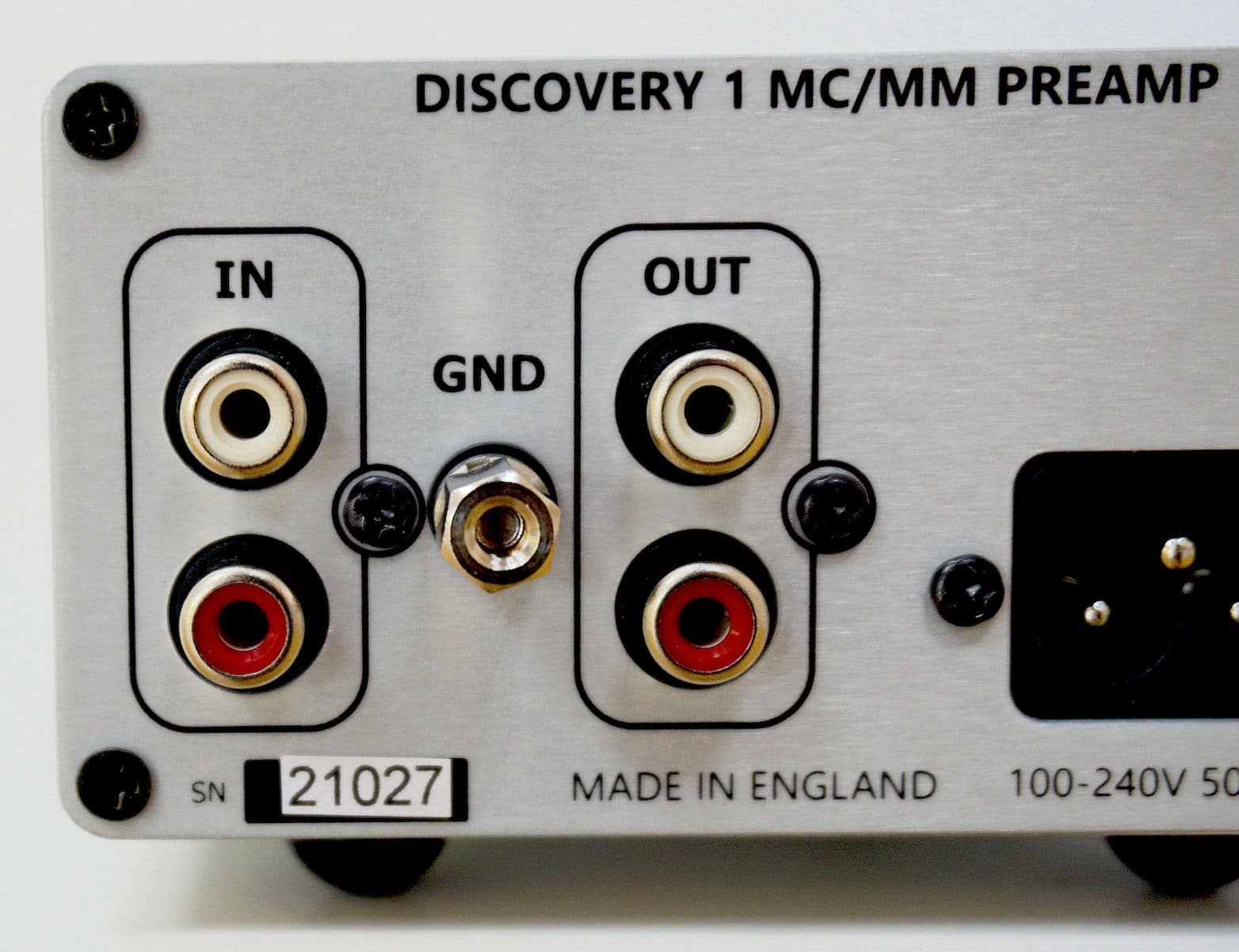
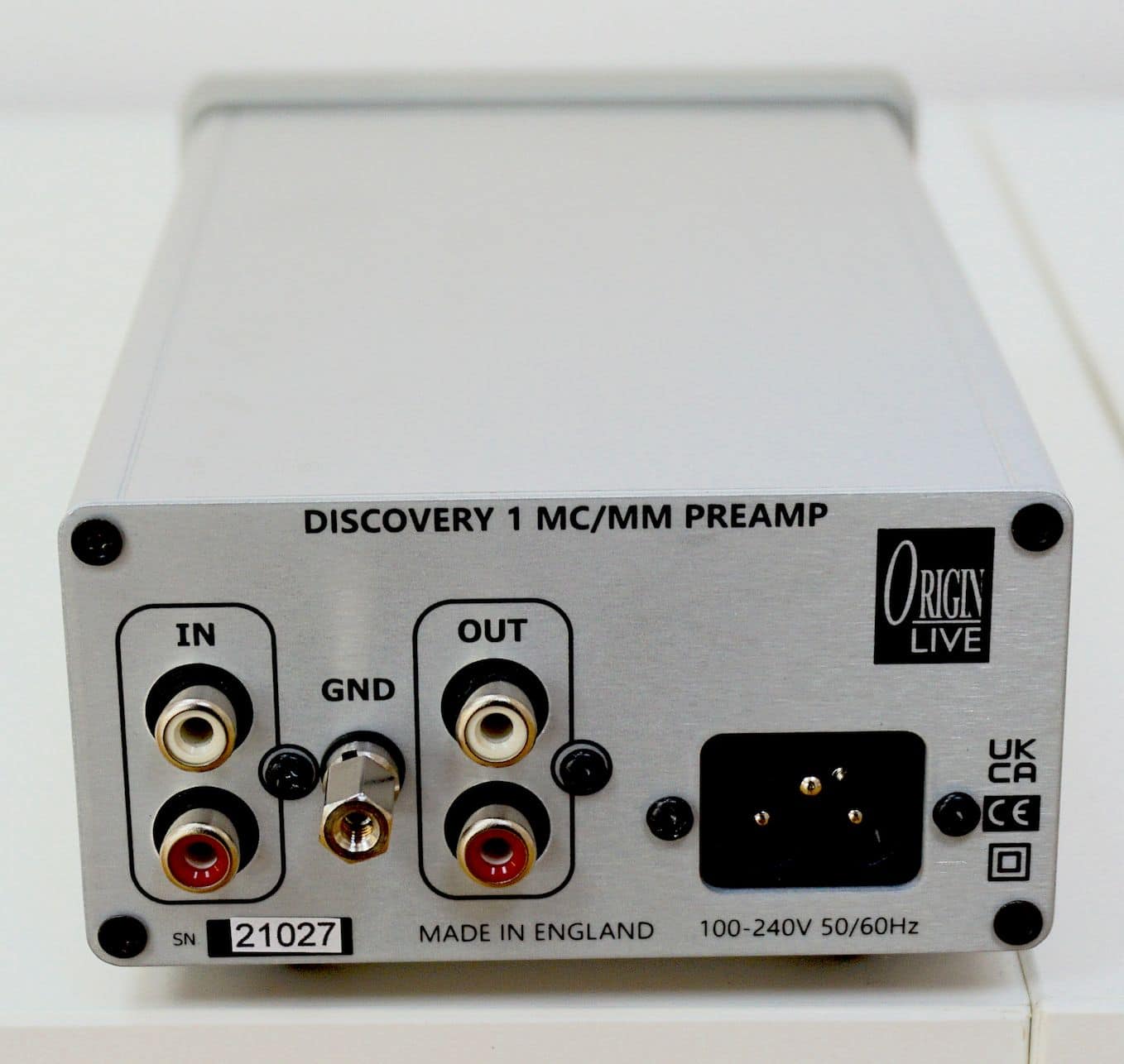
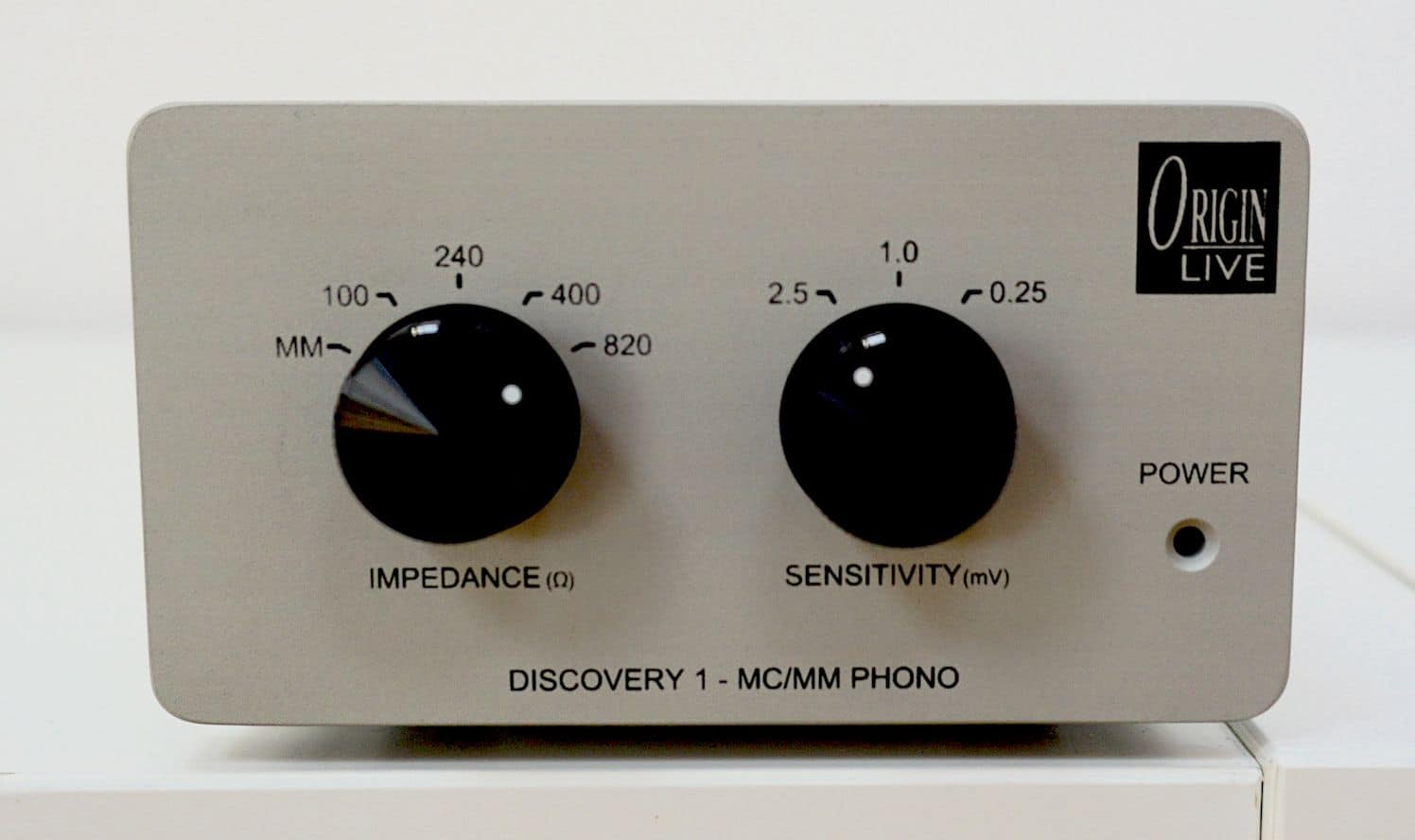
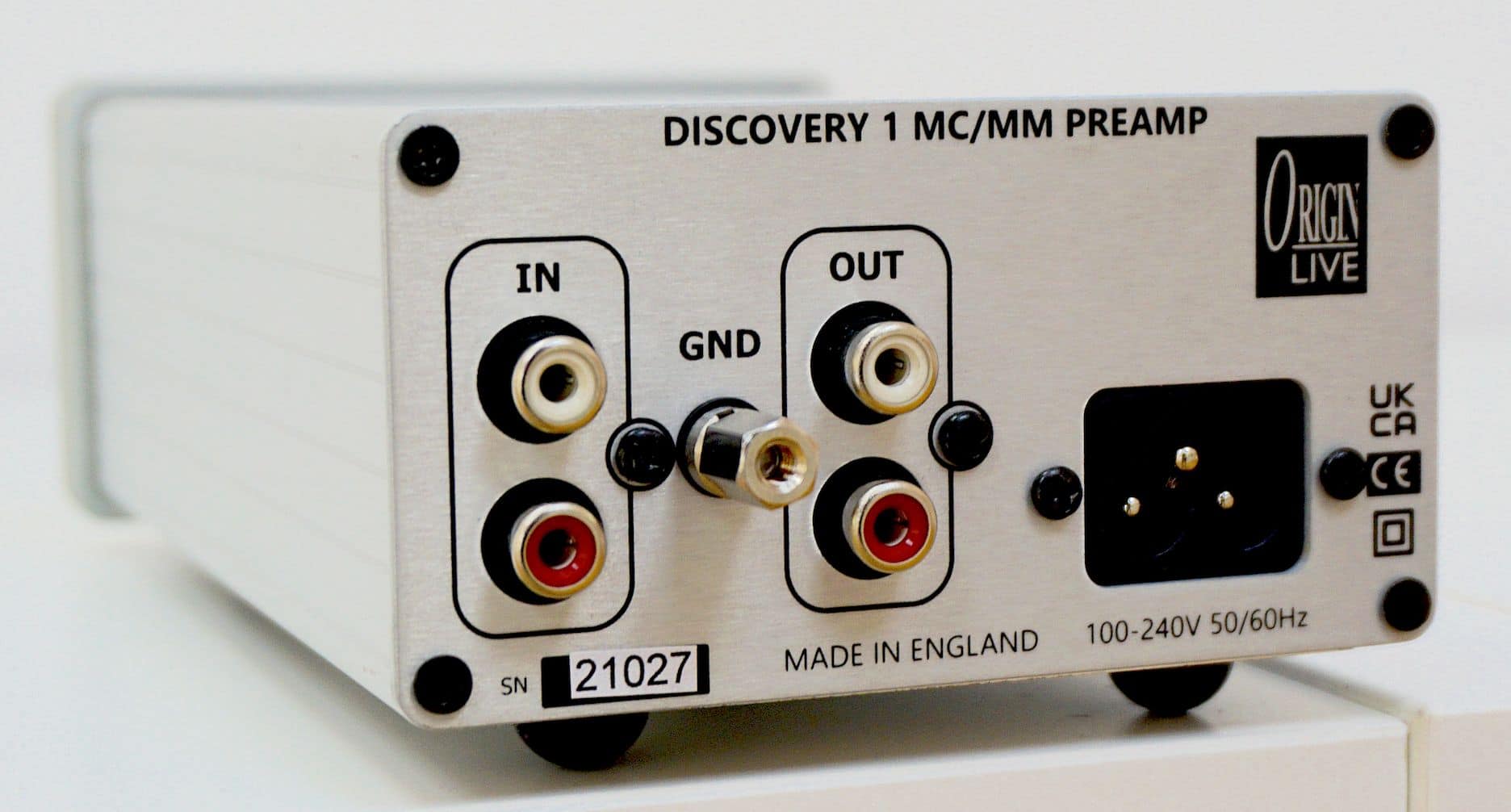

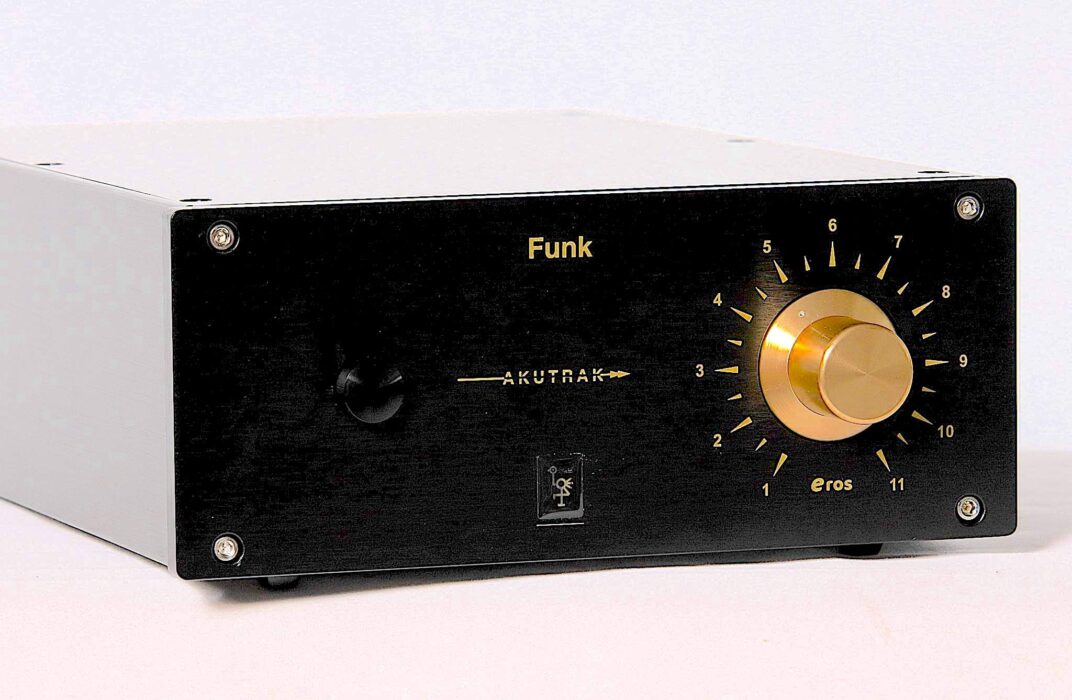
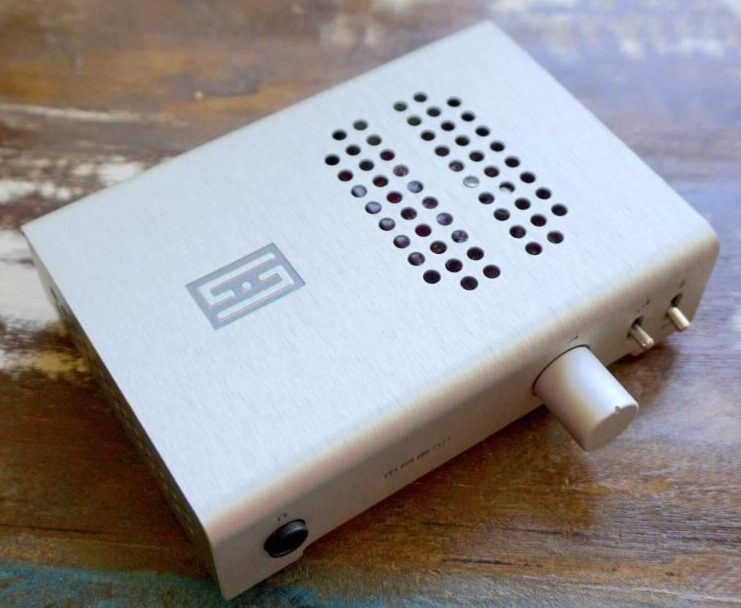
That looks interesting but why don’t you have any photo’s of whats inside the box so we can judge the parts quality and construction.
Because Origin Live were not keen. They have some tech/design in there that they’d like to keep to themselves and I respect their wishes.
I understand why you didn’t show the inside now. I worked in electronics for over 50 years as a technician and then an engineer. In that time I learned keeping a circuit design secret was fruitless once the first unit was shipped out the door.
Time spent trying to shield your design was better spent improving it.
I agree, Bob. That said, I can see Origin’s point of view. Restriction will at least delay things. Adding images to social media just speeds up the spread of the design elements.
Why do other makers include a capacitor if as you say it degrades the signal and makes the sound worse?
It’s easier and cheaper, apparently.
Hi Paul ,
Then I suggest you test the small Aurorasound Vida Prima phono preamplifier (he likes the Hana SL or ML cartridge) üòâ! I’m about to give myself a Turntable Kuzma Stabi S Stogi S optional power supply, all with the Vida Prima preamp !